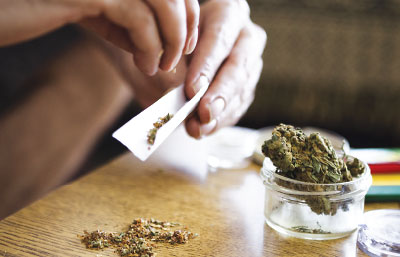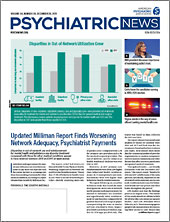Evidence is mounting that cannabis use disorder can pose a threat to cardiovascular and cerebrovascular health, especially in young people. Several studies, including two presented at a meeting of the American Heart Association (AHA) in November, have linked the condition to an increased risk of cardiac arrythmia, heart attack, and stroke in adolescents and young adults.
In one study presented at the AHA meeting, Rinkinkumar S. Patel, M.D., M.P.H., a resident physician in the Department of Psychiatry at Griffin Memorial Hospital in Oklahoma, and Sowmya Madireddy, M.D., of Mamata Medical College in Khammam, India, analyzed data from the Agency for Healthcare Research and Quality’s Nationwide Inpatient Sample (NIS), a database of hospitalizations, for the years 2010 through 2014. Among patients aged 15 to 24 years, those who had cannabis use disorder were 1.3 times more likely to have a cardiac arrhythmia than those who did not have cannabis use disorder. Among people aged 25 to 34 years, those who had cannabis use disorder were 1.5 times more likely to have a cardiac arrhythmia than those who did not have cannabis use disorder.
In a separate study published in the Journal of Adolescent Health, Patel and colleagues used NIS data, again from 2010 to 2014, to evaluate the impact of substance use on risk of hospitalization for heart attack among patients aged 15 to 22 years. Patients who had cannabis use disorder were 1.3 times more likely than their peers without cannabis use disorder to be hospitalized for heart attack. Furthermore, those with cannabis use disorder tended to have more severe illness, and their treatment cost approximately $3,600 more than those who used cocaine and roughly $10,000 more than those who used amphetamine.
In describing his research, Patel emphasized that the patients at increased risk for cardiac hospitalizations generally did not use cannabis only casually or for medical reasons.
“We are talking about problematic use,” Patel told Psychiatric News. “Cannabis may be helpful for certain conditions at particular doses, but when people abuse it, it can lead to hospitalization.”
In a study presented at the AHA meeting and published online in Stroke, Tarang Parekh, M.B.B.S., M.Sc., a researcher in the Department of Health Administration and Policy at George Mason University in Virginia, and colleagues used data from the Behavioral Risk Factor Surveillance System (BRFSS) from 2016 and 2017 to determine the risk of stroke in people aged 18 to 44 years who had used cannabis. The BRFSS is an annual state-based telephone survey of adults in which participants report on their health behaviors and whether health care professionals had ever diagnosed them with a health condition.
Patients who had used cannabis within the previous 30 days were 1.8 times more likely to have had a stroke compared with nonusers, and those who used cannabis for at least 10 days in the previous 30 days were about 2.5 times more likely to have had a stroke than nonusers. Those who used cannabis for at least 10 days in the previous 30 days and who also smoked tobacco or used e-cigarettes were three times more likely to have had a stroke than nonusers. Cannabis users were also more likely to drink heavily than nonusers, defined as more than 14 drinks a week for men and more than seven drinks a week for women.
“While marijuana is still classified as a Schedule I drug under federal law, studies have shown that frequent and daily marijuana use is increasing among youth, and it often precedes or [coincides with] other substance use,” Parekh told Psychiatric News. “Marijuana may not be as harmful as other illegal substances like cocaine or meth, but its frequent consumption with other substances critically increases the risk of stroke at a younger age. Until future prospective studies are published regarding the association of dose, mode, and duration of cannabis use with the risk of cardiovascular disease, these findings should not be ignored, and [people should use] extreme caution while using cannabis for recreational purposes.”
Mental health professionals who work with adolescents and young adults should be clear about potential risks of cannabis use and communicate in ways young patients understand, including using words like “weed,” said Patel. “Many people do not consider cannabis to be a drug, so we need to use the right language and ask the right questions: ‘Are you using it? For what purpose? What dose are you using?’ It’s when you go into detail that you get the actual picture of use,” Patel said.
These studies were not supported by outside funding. ■
““Cannabis Use Disorder Increases Risk of Cardiac Arrhythmia Hospitalization in Young Adults” was presented as a poster at the American Heart Association Scientific Sessions in Philadelphia on November 18. “Cannabis Use Is an Independent Predictor for Acute Myocardial Infarction Related Hospitalization in Younger Population” is posted
here. “Marijuana Use Among Young Adults (18–44 Years of Age) and Risk of Stroke: A Behavioral Risk Factor Surveillance System Survey Analysis” was presented at the American Heart Association Scientific Sessions in Philadelphia on November 17 and is posted
here.



